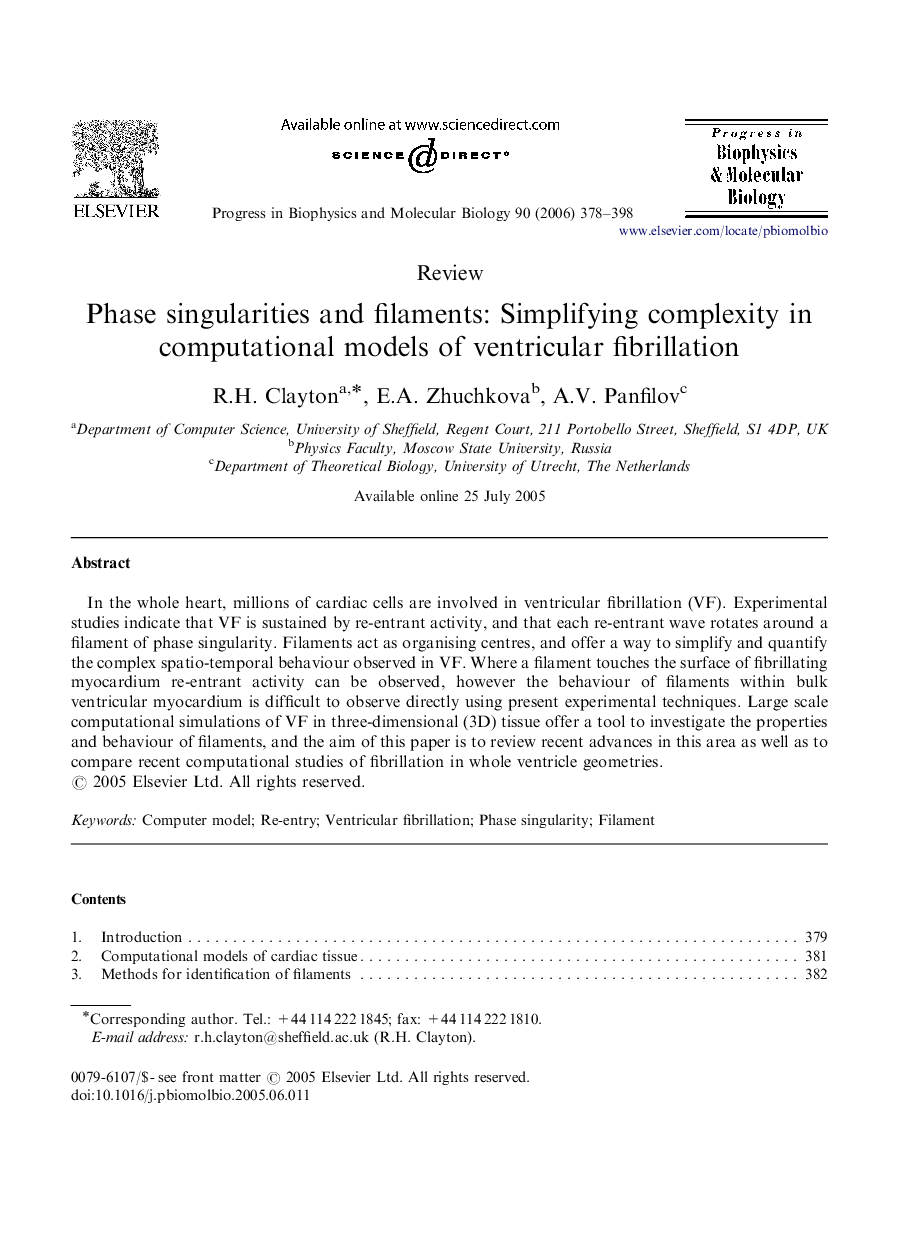| Article ID | Journal | Published Year | Pages | File Type |
|---|---|---|---|---|
| 2070369 | Progress in Biophysics and Molecular Biology | 2006 | 21 Pages |
In the whole heart, millions of cardiac cells are involved in ventricular fibrillation (VF). Experimental studies indicate that VF is sustained by re-entrant activity, and that each re-entrant wave rotates around a filament of phase singularity. Filaments act as organising centres, and offer a way to simplify and quantify the complex spatio-temporal behaviour observed in VF. Where a filament touches the surface of fibrillating myocardium re-entrant activity can be observed, however the behaviour of filaments within bulk ventricular myocardium is difficult to observe directly using present experimental techniques. Large scale computational simulations of VF in three-dimensional (3D) tissue offer a tool to investigate the properties and behaviour of filaments, and the aim of this paper is to review recent advances in this area as well as to compare recent computational studies of fibrillation in whole ventricle geometries.
